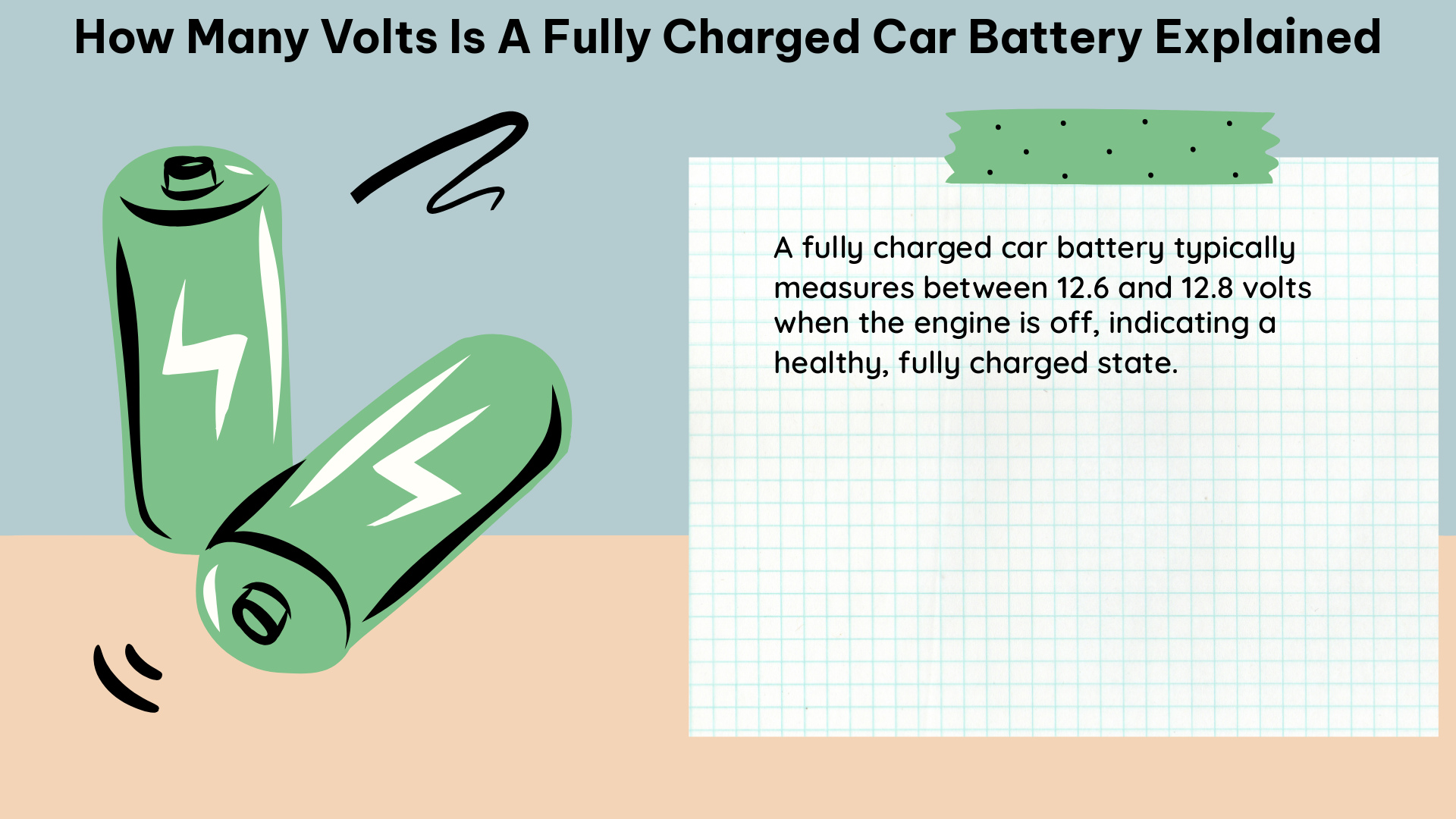A fully charged car battery typically has a voltage of 12.6 volts or higher when the engine is off, also known as the resting voltage. This is often referred to as a 12-volt battery, but the actual voltage can range from 12.6 to 14.4 volts when the engine is running, thanks to the alternator boosting the battery to these higher levels.
Measuring Car Battery Voltage
The voltage of a car battery is an important indicator of its health and condition. A multimeter can be used to measure the voltage of a car battery, and it’s recommended to conduct a car battery voltage test regularly, at least twice per year, as part of preventative maintenance.
Steps to Measure Car Battery Voltage
- Locate the battery: Consult your owner’s manual to find the location of the battery in your vehicle.
- Clean the terminals: Check the battery terminals for any dirt or corrosion. If there is any buildup, scrub it off using fine-grit sandpaper. Wear gloves to protect your skin from harmful chemicals and battery acid.
- Set the multimeter: Turn the dial of the multimeter to the “20 volts” setting.
- Remove surface charge: Turn on the headlights for about two minutes, then turn them off. This will remove any surface charge from the battery.
- Measure the voltage: Touch the red probe of the multimeter to the positive terminal of the battery, and the black probe to the negative terminal. The multimeter display should show a reading of 12.2 to 12.6 volts if the battery is in good condition for starting the vehicle.
- Test the crank cycle: Have a second person start the ignition while you observe the multimeter reading. The voltage should not fall below 10 volts during the crank cycle. If it does, the battery may be prone to failure and may need to be recharged or replaced.
- Test the alternator: Turn on all of the vehicle’s electrical equipment to maximize the voltage load. If the multimeter reading drops below 13.5 volts, the alternator may be struggling to properly charge the battery and may need replacement.
Voltage Levels and Battery Condition

A reading of 12.2 to 12.6 volts when the car is off indicates a healthy battery, while a reading below 12.2 volts suggests that the battery may be weak and in need of charging or replacement.
It’s also important to note that the voltage of a car battery can change depending on its charge level. For example, a fully charged lead-acid battery will have a voltage of around 12.6 volts, while a fully discharged lead-acid battery will have a voltage of around 11.9 volts. Lithium-ion batteries, on the other hand, have a different voltage profile and may have a higher resting voltage when fully charged.
Technical Specifications
- A fully charged car battery typically has a voltage of 12.6 volts or higher when the engine is off.
- The voltage of a car battery can range from 12.6 to 14.4 volts when the engine is running, thanks to the alternator boosting the battery to these higher levels.
- Regular voltage testing is recommended as part of preventative maintenance to ensure the health and longevity of the battery.
- A multimeter can be used to measure the voltage of a car battery, and a reading of 12.2 to 12.6 volts indicates a healthy battery.
- The voltage of a car battery can change depending on its charge level, with a fully charged lead-acid battery having a voltage of around 12.6 volts and a fully discharged lead-acid battery having a voltage of around 11.9 volts.
DIY Tips
- Regularly check the voltage of your car battery to ensure that it is in good condition.
- Clean the battery terminals regularly to ensure a good connection.
- Consider investing in a multimeter to measure the voltage of your car battery and other electrical components.
- Follow the recommended maintenance schedule for your vehicle to ensure the longevity of your car battery.
References:
– Battery Voltage Explained
– Car Battery Voltage
– How to Test a Car Battery with a Multimeter
– Car Battery Voltage Range
– Battery Basics – Guide to Batteries

The lambdageeks.com Core SME Team is a group of experienced subject matter experts from diverse scientific and technical fields including Physics, Chemistry, Technology,Electronics & Electrical Engineering, Automotive, Mechanical Engineering. Our team collaborates to create high-quality, well-researched articles on a wide range of science and technology topics for the lambdageeks.com website.
All Our Senior SME are having more than 7 Years of experience in the respective fields . They are either Working Industry Professionals or assocaited With different Universities. Refer Our Authors Page to get to know About our Core SMEs.